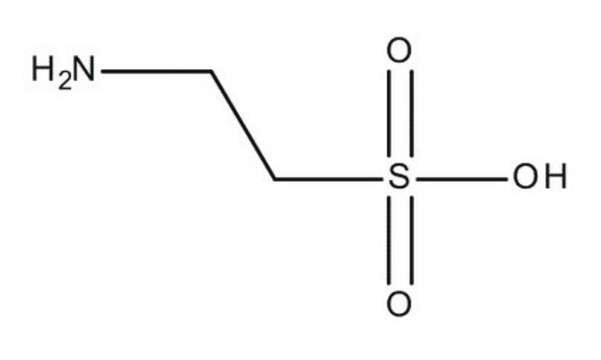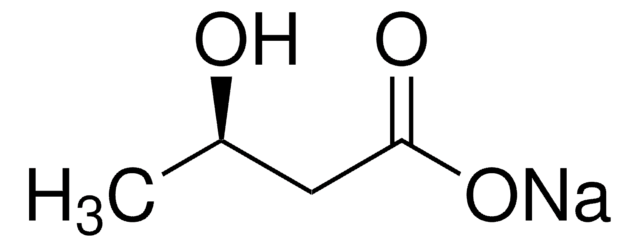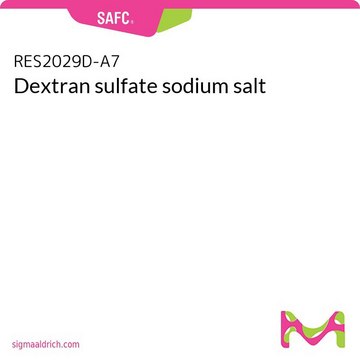T4571
Taurine
Fabricación farmacéutica
Sinónimos:
2-Aminoethanesulfonic acid
About This Item
Productos recomendados
biological source
non-animal source
Quality Level
assay
≥98.5%
form
crystalline powder
technique(s)
cell culture | mammalian: suitable
impurities
endotoxin, heavy metals, trace metals, tested
mp
>300 °C (lit.)
solubility
H2O: ≥100 mg/mL
foreign activity
cytotoxicity, tested
SMILES string
NCCS(O)(=O)=O
InChI
1S/C2H7NO3S/c3-1-2-7(4,5)6/h1-3H2,(H,4,5,6)
InChI key
XOAAWQZATWQOTB-UHFFFAOYSA-N
Gene Information
rat ... Ppm1a(24666)
¿Está buscando productos similares? Visita Guía de comparación de productos
General description
M-Clarity Program
Our comprehensive portfolio of upstream process chemicals not only provides biopharmaceutical manufacturers with high-quality raw materials for production of classical and novel therapies, but also helps them get to market faster and simplify regulatory challenges. Trust us to deliver supply chain transparency and reliable sourcing around the globe, streamlining your product qualification with best-in-class regulatory support and service.
Application
Biochem/physiol Actions
Legal Information
Storage Class
11 - Combustible Solids
wgk_germany
WGK 2
flash_point_f
Not applicable
flash_point_c
Not applicable
ppe
dust mask type N95 (US), Eyeshields, Gloves
Elija entre una de las versiones más recientes:
¿Ya tiene este producto?
Encuentre la documentación para los productos que ha comprado recientemente en la Biblioteca de documentos.
Los clientes también vieron
Nuestro equipo de científicos tiene experiencia en todas las áreas de investigación: Ciencias de la vida, Ciencia de los materiales, Síntesis química, Cromatografía, Analítica y muchas otras.
Póngase en contacto con el Servicio técnico








